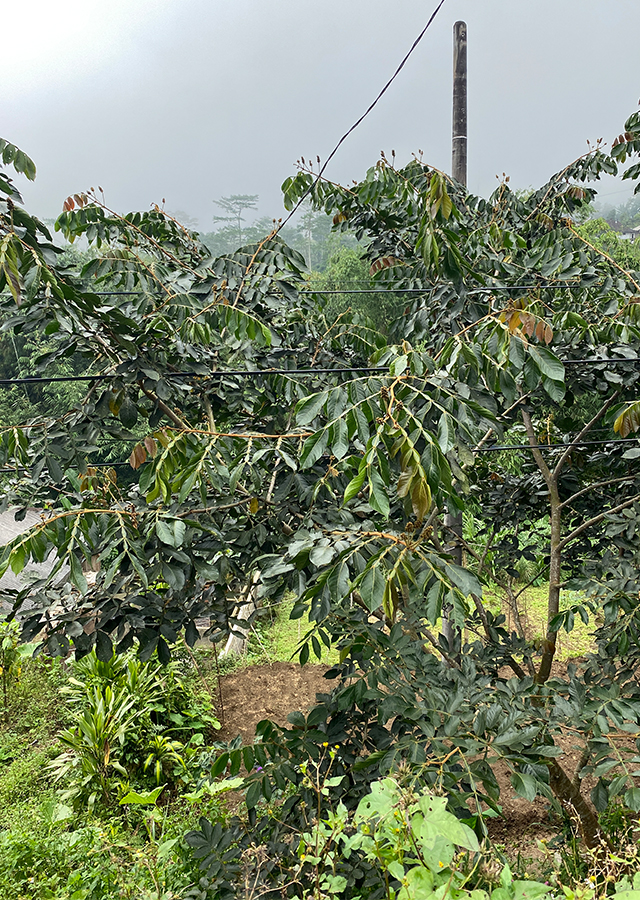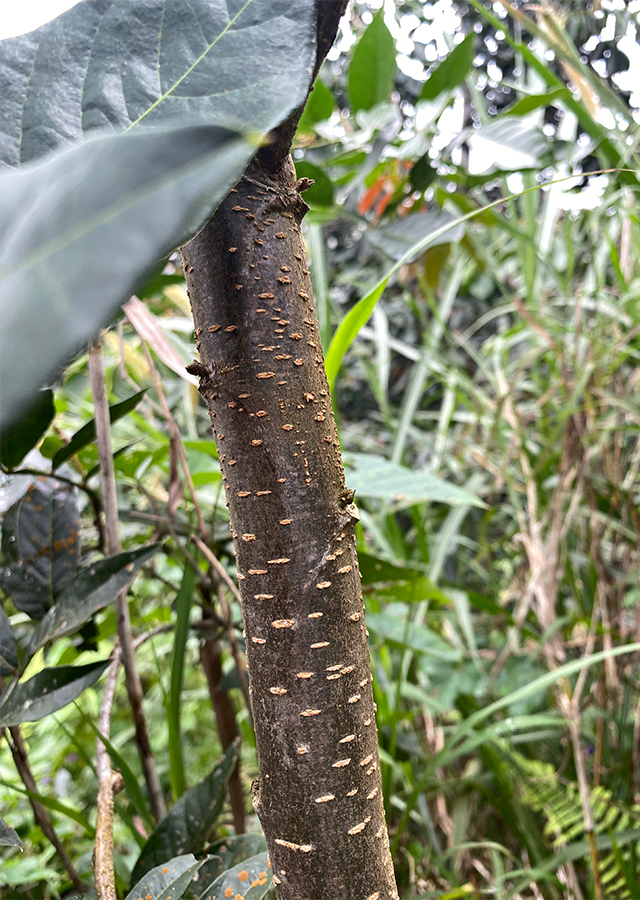Traditional Herbs from Inga edulis
strengthen_bones
- Prepare enough snowfruit.
- Eating snowfruit flesh can be useful for strengthening bones.
treat_diarrhea
- Take enough snowfruit leaves, wash them thoroughly.
- Boil the leaves until boil.
- Let it warm/cool.
- Strain then drink.
What is Inga edulis Looks like??



Parts of Inga edulis that could be used
- Leaves", "Seeds", "Bark", "Fruit
Inga edulis Distribution
Snow fruit or Inga edulis is a tropical plant from the Fabaceae family originating from Central and South America (Amazon, Bolivia, Brazil, Colombia, Ecuador, French Guiana, Guyana, Peru, Suriname and Venezuela). This species has become naturalized in tropical and sub-tropical countries throughout the world. This plant is very popular in South America, because its edible fruit tastes like ice cream and is rich in vitamin A, calcium, protein and fiber, and is low in calories and cholesterol. Native Amazonians make extensive use of this species as a source of wood, shade plants, food, medicinal plants, and for the production of the alcoholic beverage cachiri. Inga edulis also naturally fixes nitrogen from the air into the soil, enriching the surrounding earth and benefiting nearby plants. As a source of wood, apart from being used to make crates and packing stacks, the wood is also popularly used as fuel, because the wood has a high calorific value and burns little. Based on its function as a medicinal plant, Inga edulis is also widely used in several countries as a traditional medicinal ingredient, which people believe is able to overcome complaints of various diseases, including coughs and dysentery.Agroecology of Inga edulis
Snow fruit is a tropical plant in the hot, humid lowlands, which can also be found at altitudes of up to 2,200 m above sea level. Its habitat is found growing in river floodplains, highland forests on river banks, adjacent rainforests, damp, wet, or sometimes slightly dry forests, or in open areas. In Peru, this species is found growing in scrub and forested swamps at altitudes of 110 - 540 m above sea level. Snowberry or I. edulis grows best in areas where the average annual daytime temperature is in the range of 23 - 30 °C, but can tolerate 18 - 35 °C. Mature plants can die at temperatures of -2 °C or lower, while new growth will be damaged at 0 °C. Average annual rainfall is in the range of 1,200 - 2,500 mm, but tolerates 640 - 4,000 mm. Optimal growth of I. edulis requires a sunny area or full sun, but it also does well in dappled shade. It thrives in all types of soil in the pH range of 4-8. This species can handle some waterlogging for 2 - 3 months each year and is also very resistant to short periods of drought.�
Morphology of Inga edulis
- The stem is cylindrical, often contorted, often branching from near the base. The branches form a broad, even, and quite dense canopy. The bark is pale gray and smooth, with pale elongated lenticels. The young twigs and stem are angular in cross-section elbowed and covered with short, fine brown hairs.
- Leaves are alternate, pinnate, about 10-30 cm long, with 4-6 pairs of opposite leaflets, oval in shape, dark green, webbed, slightly pubescent. The terminal pair of leaflets are larger than the basal pair. Between each leaflet are nectar glands on the rhachis leaves and these are large (2 to 3 mm).
- Flowers are usually fragrant, have a calyx tube with 5 lobes (4 to 9 mm long), a corolla tube with 5 lobes (13 to 25 mm long), and a large number of white to 4.5 cm, united in a tube at the bottom.
- Pods, longitudinally ribbed or ribbed cylinders, which can be straight, curved or often spirally twisted, yellowish brown to green in color. Inside the pod there are green seeds covered by sweet, cotton-like, white flesh.
- The seeds are ovoid, the number of seeds varies, 10-20 seeds, purplish black to olive in color.
Cultivation of Inga edulis
- Propagation is done through seeds.
- Seeds germinate in 2-3 days (germination rate 95 to 100%). Transfer the seedlings to individual containers when they have 4 - 6 leaves and after 4 - 5 months the plants are ready to be planted in large land or garden.
Inga edulis, more details :
Chemical Content of Inga edulisFlavonoids (5,7,3 �,4 �-tetrahydroxy-3-methoxy-flavone; 6,3 �,4 �-trihydroxyaurone and 5,7,4 �-trihydroxy-6,8-dimethylflavonone, gallic acid, catechin, epicatechin, myricetin-3-O-α-L-rhamnopyranoside, quercetin-3-O-α-L-glucopyranoside, quercetin-3-O-α-L-rhamnopyranoside).
Benefits of Inga edulis
Relieves coughs and canker sores, helps heal sores on the lips due to herpes, maintains eye health, helps lose weight, is good for muscle health (builds body muscles), maintains heart health, treats dysentery, diarrhea, rheumatism, lowers cholesterol, controls blood sugar, strengthens bones, reduces excessive appetite, maintains healthy body cells, improves the digestive system and makes digestive organs healthy (constipation), prevents flatulence, relieves headaches, prevents cancer, reduces stress and anxiety, eliminates toxins from the body, helps heal irritation intestinal lining hoarse.
Simplisia of Inga edulis
Another Facts for Inga edulis :
Synonym of Inga edulisFeuilleea edulis (Mart.) Kuntze, Feuilleea conferta (Benth.) Kuntze, Inga conferta Benth.
Habitus of Inga edulis
Tree. Annual tree, fast growing with a wide, spreading and quite dense crown, reaching 30 m in height, 60 cm in diameter, usually branching starting 3 m from the bottom
Habitat of Inga edulis
- Riverside
- Forest
No comments:
Post a Comment